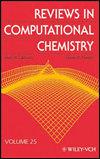MAPPING ENERGY TRANSPORT NETWORKS IN PROTEINS
引用次数: 13
Abstract
The response of proteins to chemical reactions or impulsive excitation that occurs within the molecule has fascinated chemists for decades. In recent years ultrafast X-ray studies have provided ever more detailed information about the evolution of protein structural change following ligand photolysis, and time-resolved IR and Raman techniques, e.g., have provided detailed pictures of the nature and rate of energy transport in peptides and proteins, including recent advances in identifying transport through individual amino acids of several heme proteins. Computational tools to locate energy transport pathways in proteins have also been advancing. Energy transport pathways in proteins have since some time been identified by molecular dynamics (MD) simulations, and more recent efforts have focused on the development of coarse graining approaches, some of which have exploited analogies to thermal transport in other molecular materials. With the identification of pathways in proteins and protein complexes, network analysis has been applied to locate residues that control protein dynamics and possibly allostery, where chemical reactions at one binding site mediate reactions at distance sites of the protein. In this chapter we review approaches for locating computationally energy transport networks in proteins. We present background into energy and thermal transport in condensed phase and macromolecules that underlies the approaches we discuss before turning to a description of the approaches themselves. We also illustrate the application of the computational methods for locating energy transport networks and simulating energy dynamics in proteins with several examples.绘制蛋白质中的能量传输网络
几十年来,蛋白质对分子内发生的化学反应或脉冲激发的反应一直吸引着化学家。近年来,超快x射线研究提供了关于配体光解后蛋白质结构变化演变的更详细信息,时间分辨红外和拉曼技术,例如,提供了肽和蛋白质中能量传输的性质和速率的详细图片,包括通过几种血红素蛋白的单个氨基酸识别传输的最新进展。用于定位蛋白质中能量传输途径的计算工具也在不断发展。一段时间以来,蛋白质中的能量传递途径已经被分子动力学(MD)模拟识别出来,最近的努力集中在粗粒化方法的发展上,其中一些方法利用了其他分子材料中的热传递的类比。随着蛋白质和蛋白质复合物途径的识别,网络分析已被用于定位控制蛋白质动力学和可能的变构的残基,其中一个结合位点的化学反应介导蛋白质距离位点的反应。在本章中,我们回顾了蛋白质中能量传输网络的计算定位方法。在转向方法本身的描述之前,我们介绍了凝聚相和大分子中的能量和热传输的背景,这些方法是我们讨论的方法的基础。我们还举例说明了计算方法在定位能量传输网络和模拟蛋白质能量动力学中的应用。
本文章由计算机程序翻译,如有差异,请以英文原文为准。
求助全文
约1分钟内获得全文
求助全文

 求助内容:
求助内容: 应助结果提醒方式:
应助结果提醒方式:


